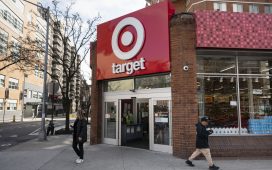Australian supermarkets should follow the lead of French giant Carrefour and shame brands by alerting shoppers when a packaged food product has reduced in size, a leading consumer group says.
Known as “shrinkflation”, food companies have been cutting the size of their products but not the price, angering consumers already grappling with surging household costs.
Ian Jarratt, from the Queensland Consumers Association, says shoppers could make better buying choices if downsized products were more easily identifiable on supermarket shelves.
“Manufacturers use shrinkflation to make sneaky price increases and improve or maintain their margins because most shoppers are more aware of, and sensitive to, higher selling prices than reductions in the amount in packages,” said Jarratt, who helped lead the push for supermarkets to display unit pricing.
While shrinkflation is not a new practice, the inflationary period has sparked a wave of downsizing as food companies try to reclaim, or boost, profits amid rising costs.
The changes can be hard to detect, obscured by “new and improved” packaging.
Guardian Australia has tracked instances of smaller products appearing in a supermarket’s low price promotions, despite them being more expensive than their predecessors.
Shrinking jam jars were among the most complained about food items by Guardian readers after a decision by well-known brands Cottee’s and Rose’s to reduce their 500g jams to 375g without an equivalent price reduction.
The French supermarket chain Carrefour is trying to combat the shrinking trend by putting labels on shelves warning shoppers of the practice, pressuring packaged food suppliers.
Carrefour’s labels say: “This product has seen its volume or weight fall and the effective price from the supplier rise.”
Jarratt said Australian supermarkets should take note. “Australian consumer awareness of ‘shrinkflation’ and ability to make well-informed choices would be greatly increased if Australian supermarkets did the same,” he said.
A Woolworths spokesperson said customers were scrutinising product sizes and pricing more than ever. “Pack and serving size is up to the individual manufacturer,” the spokesperson said.
Coles was contacted for comment.
The two major chains control about two-thirds of the supermarket sector in Australia.
Bronwyn Thompson, a sales strategist who has worked for major household brands, said some suppliers resorted to shrinking their products because they couldn’t retrieve increased costs from the big supermarkets.
“Some suppliers are just not able to pass through price increases any other way,” said Thompson.
“There’s been a massive margin transfer over the last 20 years from suppliers to Coles and Woolies.”
The Australian Food and Grocery Council recently said in a submission to a parliamentary committee that the major supermarkets use their market power to impede suppliers from passing on rising production costs.
Woolworths posted a $1.62bn profit in 2022-23, backed by a dramatic lift in profit margins for its Australian food business during a cost-of-living crisis. Coles recorded a more modest rise in profitability over the same period.
The expanding margins mean customers are arguably paying more than they should for necessities, with rising food prices also acting as an inflation trigger.
Supermarket pricing policies will come under scrutiny at an inquiry by the Australian Council of Trade Unions into price gouging, chaired by former competition head Allan Fels, which is due to start conducting public hearings this week.
The supermarkets have consistently denied they price gouge and cite productivity improvements as part of the reason for their strong returns.







